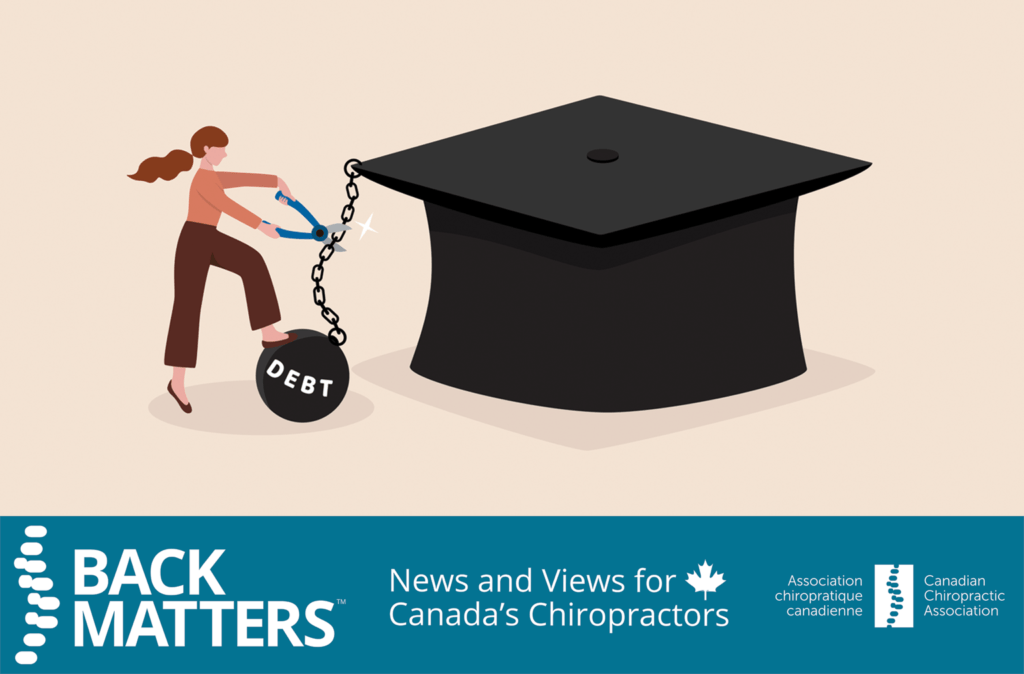

“There is so much more we could be doing for Canadians in these communities” – Greg
With graduation on the horizon, chiropractic students like Danika are grappling with the question of where to practice. “The debt I have accrued will impact where I decide to work and build my practice. I feel like opportunities are limited if I return to the small town I grew up in. Healthcare is stretched thin in these communities, and chiropractors could lessen the load for general practitioners, but opening my own practice would be quite costly.”
Across Canada, rural and remote communities are disproportionally affected by MSK conditions. These communities face higher prevalence of MSK conditions1 and encounter significant barriers to accessing healthcare, including provider shortages and limited pain care services2. And yet, only 10% of Canadian chiropractors work in rural and remote communities of fewer than 10,000 people3. Improving access to primary healthcare professionals that have expertise to assess, diagnose, manage, and treat MSK conditions is of the utmost urgency for people living in these regions. However, for many chiropractors, especially new graduates and early career practitioners, choosing to practice in remote or rural communities comes with a lot of barriers.
Most new chiropractic graduates carry between $150,000 and $200,000 of student debt.
These figures do not include additional loans or start-up costs required to establish or buy practices. As a result of this debt, new graduates and early career chiropractors tend to gravitate toward urban areas, seeking to establish themselves in communities with higher income and prevalence of private benefits insurance. While there is more competition and cost of living might be higher, urban locales are still seen to offer more opportunities for early career chiropractors to supplement their incomes by working in more than one clinic or engaging in other forms of employment.
“Debt has already factored into my decision of where to work and build a practice. I know that if I go to a more urban area, I can get in as an associate with one or more clinics to help start paying down my debt from the start. I don’t have the financial capacity to give back to more underserved communities without the risk of compromising my future.”
This financial reality is front of mind for Greg, a fourth-year student at CMCC.
Last year, the federal government announced its intent to expand the Canadian Student Loan Forgiveness Program (CSLF) beyond physicians and nurses to include other regulated health professionals. The program forgives a portion of Canada student loans for every year the applicant practices 400 hours in a remote or rural community.
The CCA is currently advocating for Doctors of Chiropractic to be added to the list of healthcare professions, demonstrating how this expansion would be a positive step towards supporting rural economic development, healthy aging in place, relieving the strained public system, and addressing the opioid crisis that is particularly felt in rural communities.
This inclusion would help to mitigate some of the financial pressures experienced by new graduates and provides an important incentive to consider building practices in underserved rural or remote locations.
Nearing graduation, Greg recognizes how important the CSLF program could be for chiropractic students: “It would give new graduates freedom from having to stay in urban centres to try and pay off their extensive loans. It would allow chiropractic to be more present in rural communities—to go where we are most needed. If this program is around when I graduate, I would definitely consider participating.”
Extending eligibility of the CSLF program to include Doctors of Chiropractic would create valuable, financially viable practice opportunities in rural and remote communities for new graduates. The CCA will continue to advocate for this important change. We are committed to helping realize a future in which new graduates, no longer encumbered by their debt, will have the support and freedom required to respond to the healthcare needs of all Canadians.
References
1.Canadian Population Health Initiative. (2006). How Healthy are Rural Canadians? An Assessment of Their Health Status and Health Determinants. https://secure.cihi.ca/free_products/rural_canadians_2006_report_e.pdf
2.Government of Canada. (2020). Canadian Pain Task Force Report: October 2020. https://www.canada.ca/en/health-canada/corporate/about-health-canada/public-engagement/external-advisory-bodies/canadian-pain-task-force/report-2020.html
3.2022 Canadian Chiropractic Resource Database